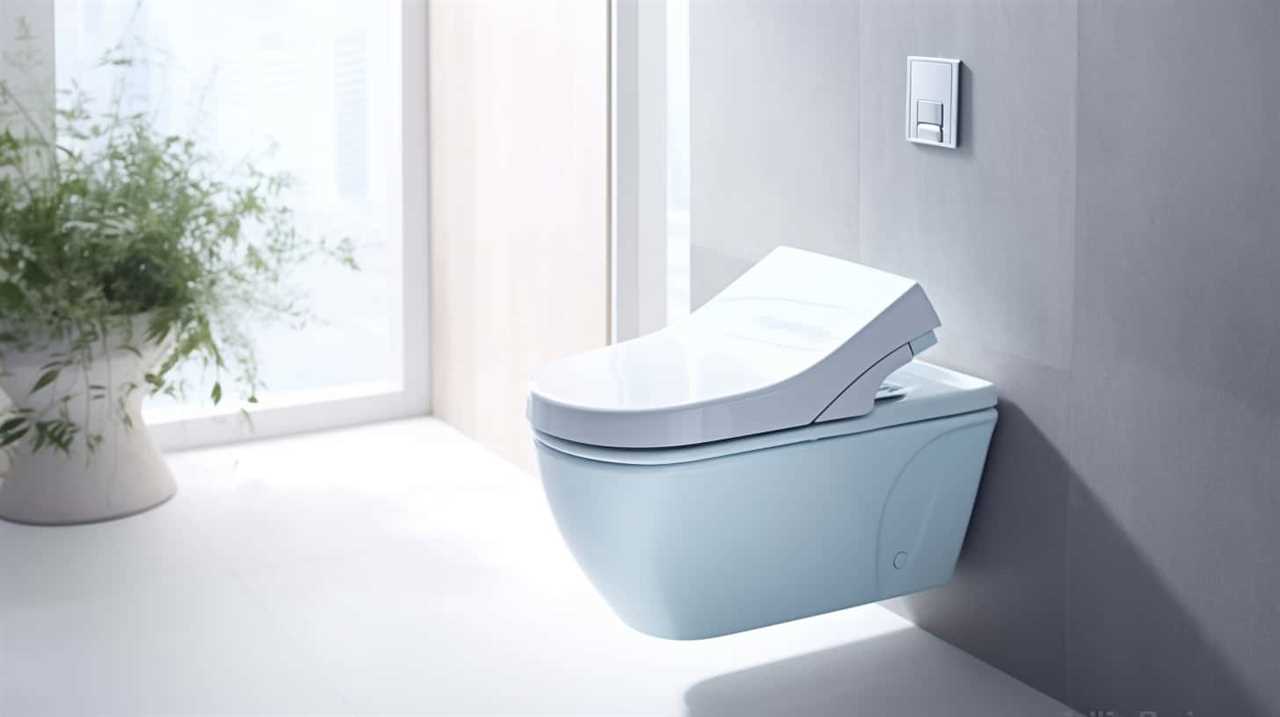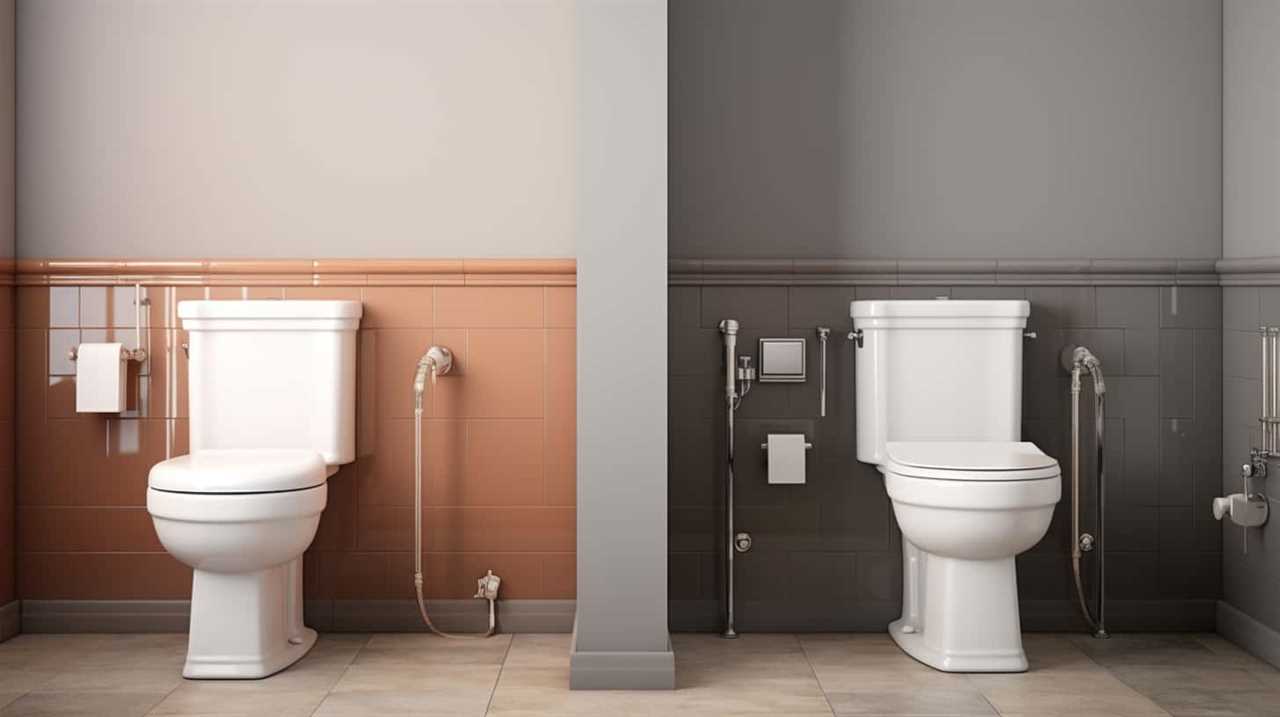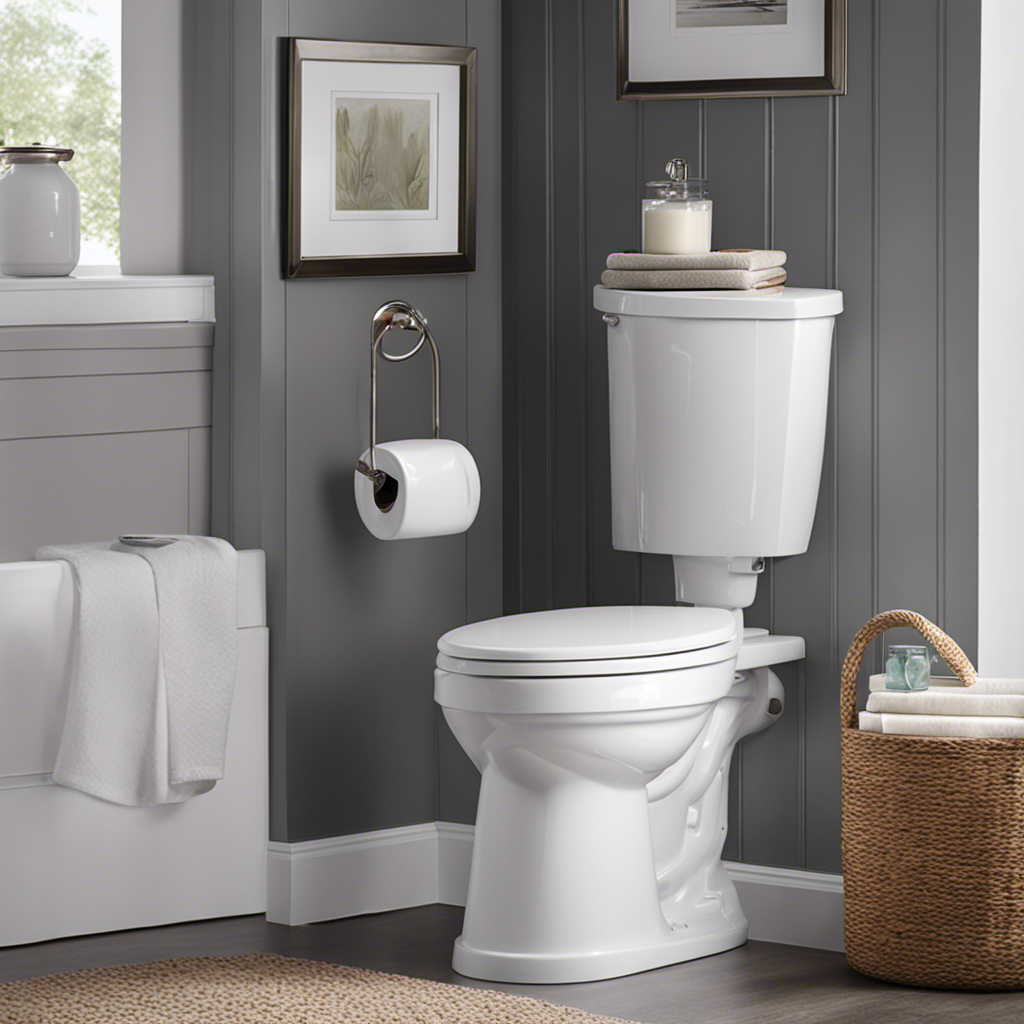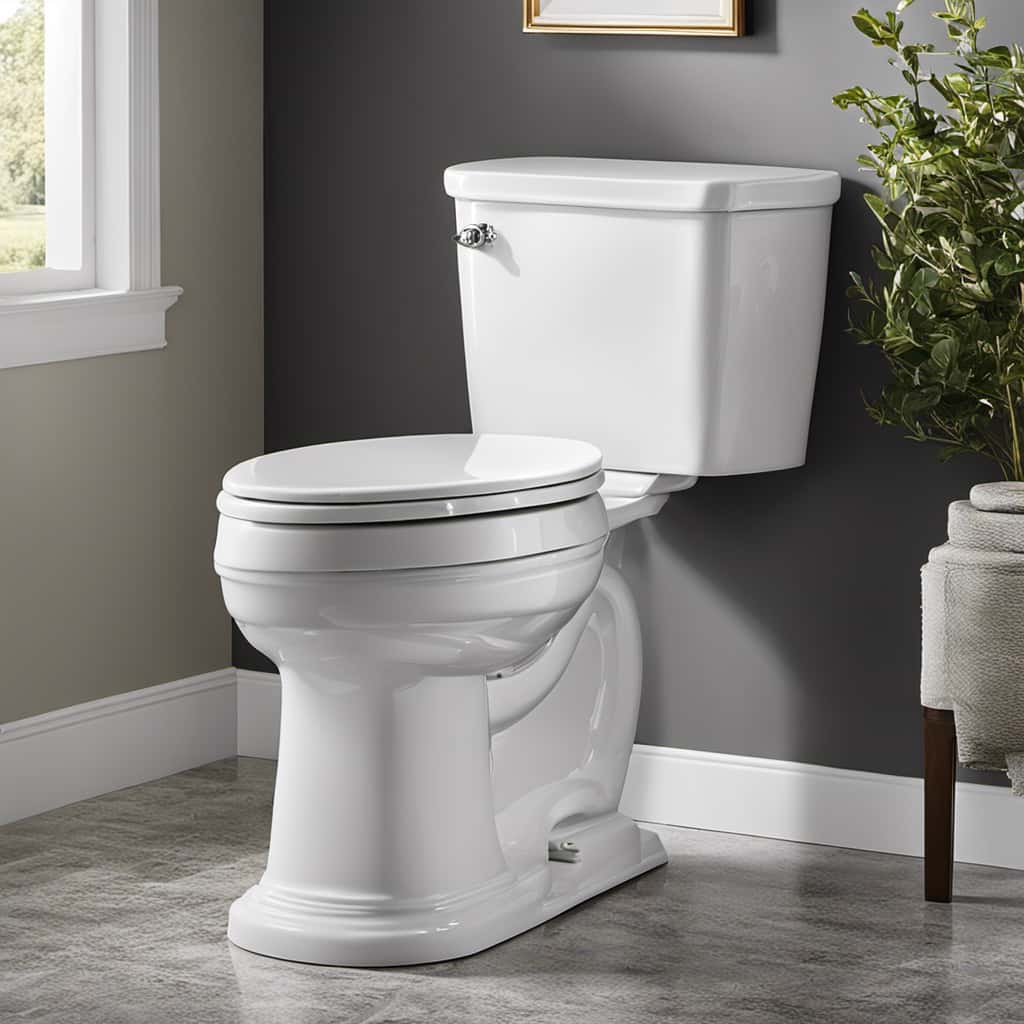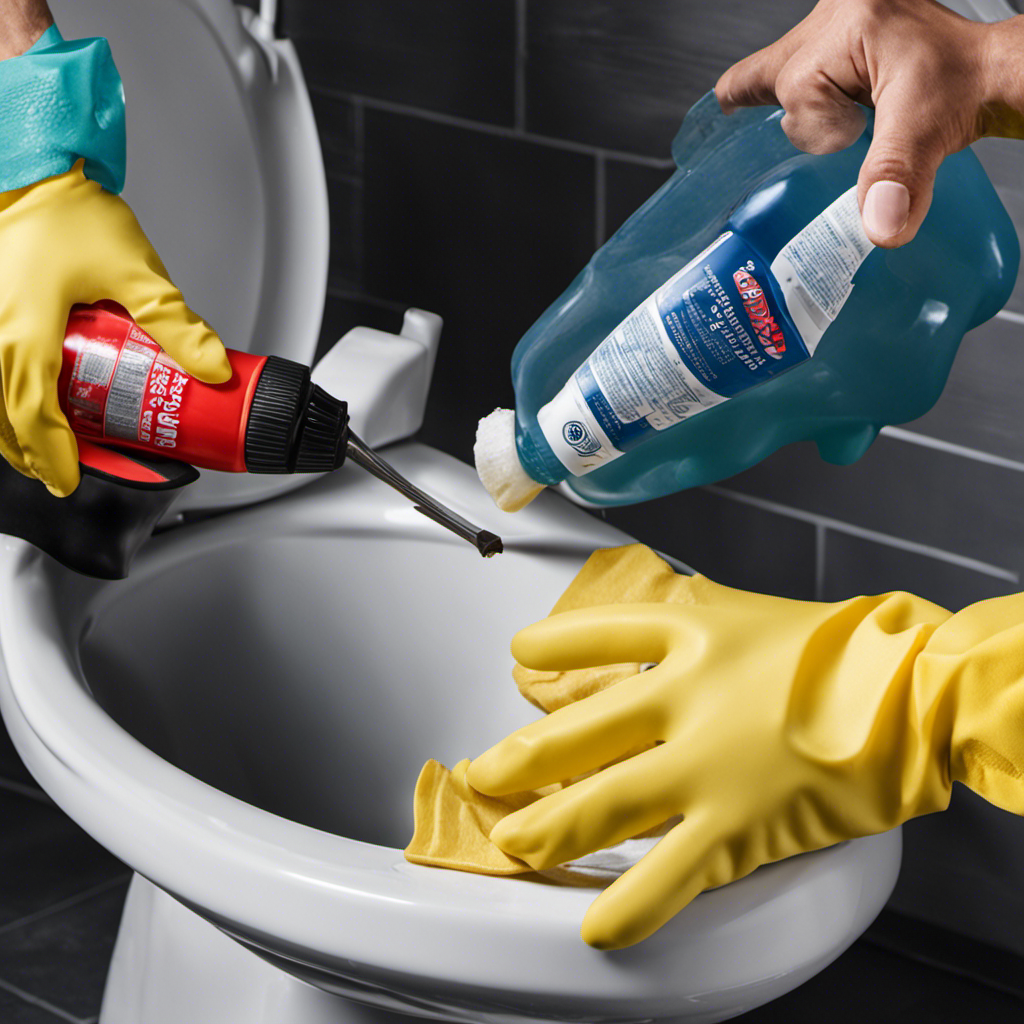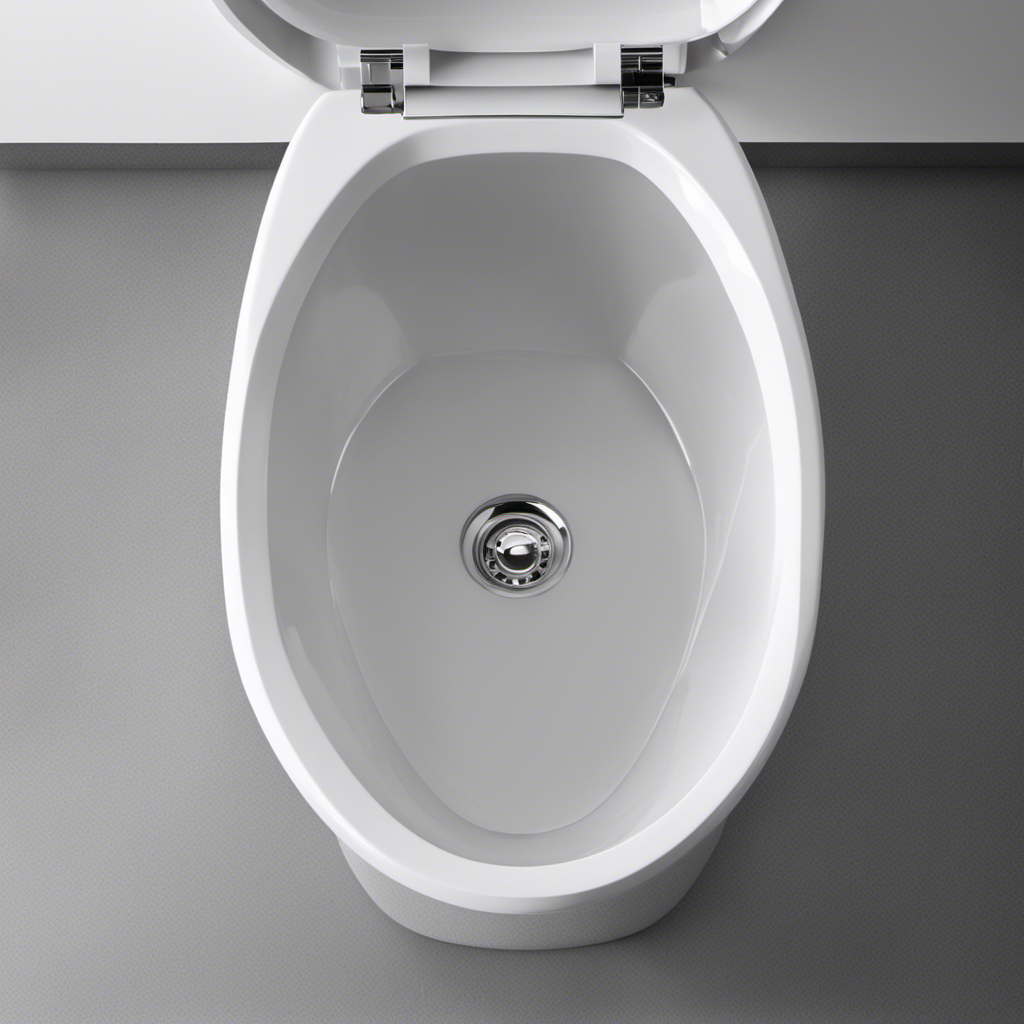Have you ever wondered how long it takes for toilet wipes to break down? Well, we’ve got the answer for you.
In this article, we will explore the composition of toilet wipes and the factors that affect their breakdown time. We will also discuss the average breakdown time for flushable and non-flushable toilet wipes, as well as eco-friendly alternatives.
Get ready to dive deep into the science behind toilet wipes and discover the truth about their breakdown process.
Key Takeaways
- Toilet wipes made from non-biodegradable materials have longer breakdown times compared to biodegradable ones.
- Flushable wipes take several weeks to several months to break down completely, depending on the brand and composition.
- Non-flushable toilet wipes made from non-biodegradable synthetic materials can take several years to break down.
- Using eco-friendly alternatives like biodegradable toilet wipes, toilet paper, or bidets can reduce environmental impact and plastic pollution.
The Composition of Toilet Wipes
Toilet wipes are composed of various materials that can affect their break down time. The manufacturing process of toilet wipes involves combining nonwoven fabrics, such as polyester or polypropylene, with cleansing agents and moisturizers. These materials are chosen for their durability and ability to retain moisture, which enhances their cleaning properties.
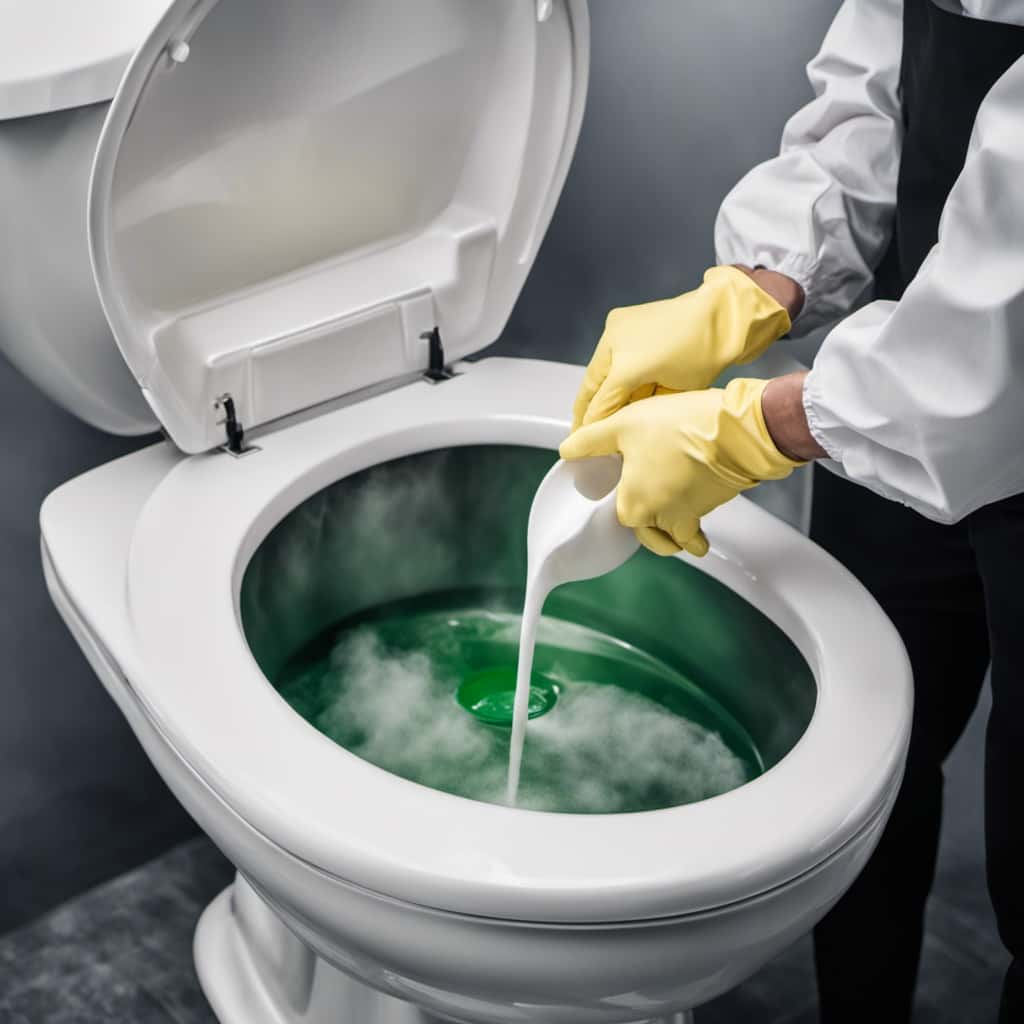
However, the same properties that make toilet wipes effective can also impact their breakdown time. When flushed down the toilet, these wipes can become entangled with other debris, leading to clogs in plumbing systems. Their non-biodegradable nature means that they don’t break down easily, causing potential blockages and damage to pipes and sewage systems.
Understanding the composition of toilet wipes is crucial in determining their impact on plumbing systems and the environment. Now, let’s explore the factors that affect their breakdown time.
Factors Affecting Toilet Wipes Breakdown Time
One of the key factors that affects the breakdown time of toilet wipes is the composition of the materials used in their manufacturing process. Toilet wipes that are made from non-biodegradable materials, such as polyester or plastic, have a significantly longer breakdown time compared to those made from biodegradable materials. Non-biodegradable wipes are resistant to microbial activity and don’t break down easily in the environment. This can lead to negative environmental impacts, as these wipes can accumulate in landfills or water bodies, contributing to pollution and harming wildlife.
Another factor that influences the breakdown time of toilet wipes is the effect of sewage systems. When flushed down the toilet, the wipes enter the sewage system, where they can encounter various obstacles and conditions that affect their decomposition rate. The presence of other materials, such as fats, oils, and grease, can slow down the breakdown process. Additionally, the lack of oxygen and limited exposure to sunlight in the sewage system can further hinder the breakdown of toilet wipes.
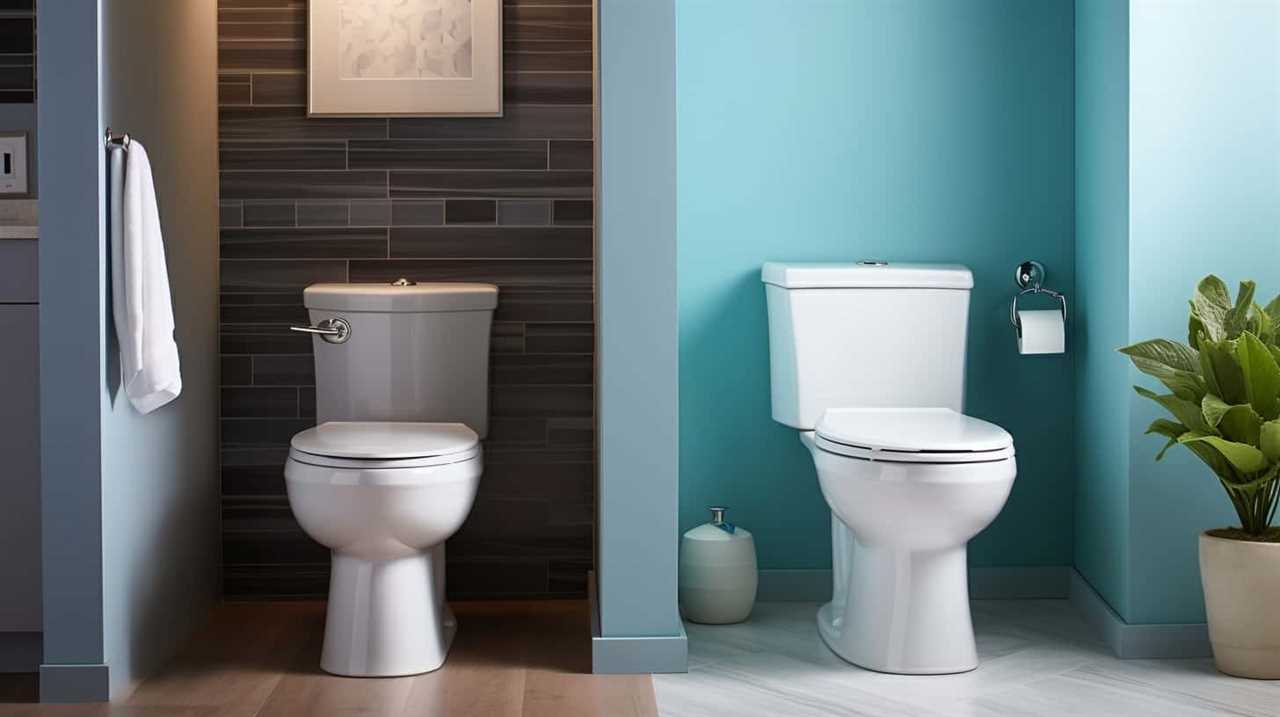
Understanding these factors is crucial in evaluating the environmental impact of non-biodegradable toilet wipes and developing more sustainable alternatives.
Now, let’s explore the average breakdown time for flushable toilet wipes.
Average Breakdown Time for Flushable Toilet Wipes
Based on the factors discussed earlier, we can now delve into the average breakdown time for flushable toilet wipes. The breakdown time of flushable toilet wipes is a crucial factor in determining their environmental impact. Studies have shown that flushable wipes, despite being labeled as such, don’t break down as quickly as toilet paper. On average, it takes flushable toilet wipes anywhere from several weeks to several months to break down completely. This extended breakdown time can lead to clogging in sewage systems and contribute to environmental pollution.
It’s important to note that the breakdown time can vary depending on the specific brand and composition of the wipes. With this understanding of flushable wipes, let’s now explore the breakdown time of non-flushable toilet wipes.
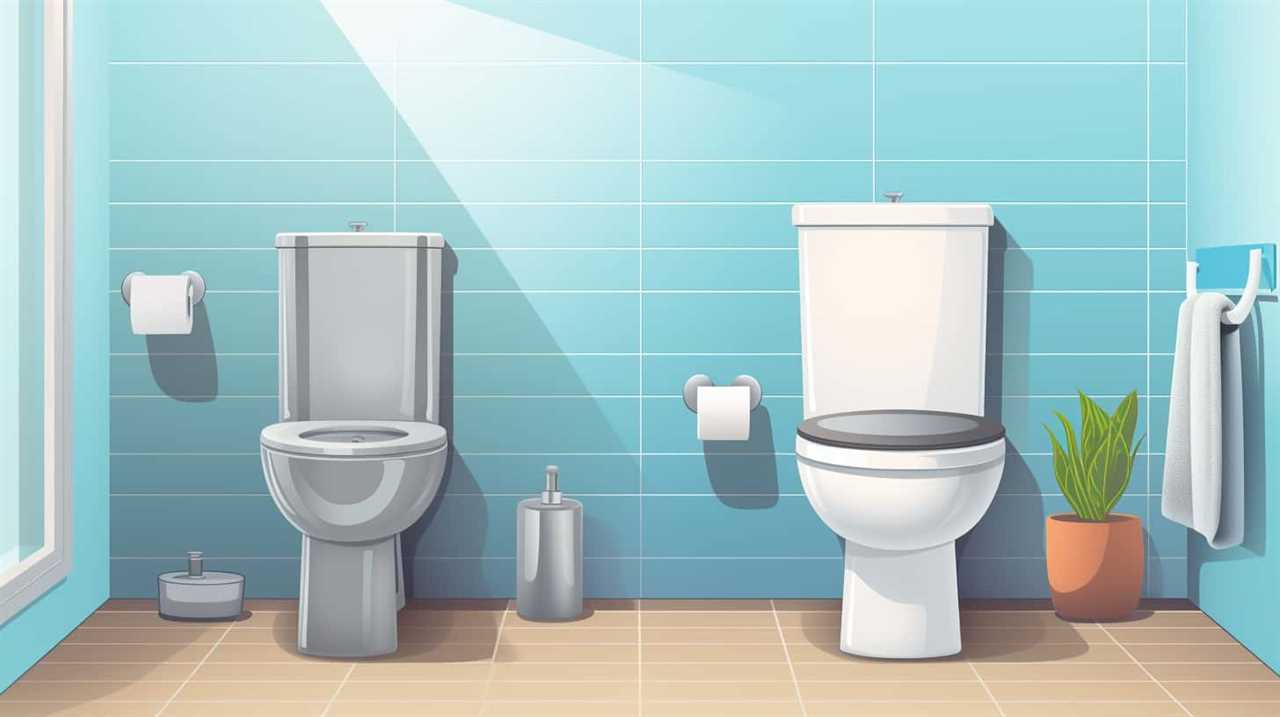
Non-Flushable Toilet Wipes: How Long Do They Take to Break Down
In our investigation into the breakdown time of toilet wipes, we now turn our attention to non-flushable toilet wipes and their rate of decomposition. Non-flushable toilet wipes, unlike their flushable counterparts, aren’t designed to disintegrate in water. Instead, they’re intended to be disposed of in the trash.
Here are four key points to consider regarding the breakdown time of non-flushable toilet wipes:
- Non-flushable toilet wipes are typically made from synthetic materials such as polyester or polypropylene, which are known to be non-biodegradable.
- These wipes can take several years to break down, depending on environmental conditions such as temperature and moisture.
- Improper toilet wipe disposal, such as flushing them down the toilet, can lead to clogged pipes and contribute to sewage system blockages.
- The environmental impact of non-flushable toilet wipes is significant, as they can accumulate in landfills and contribute to plastic pollution.
Understanding the breakdown time of non-flushable toilet wipes highlights the importance of proper toilet wipe disposal and the need for eco-friendly alternatives.
Eco-Friendly Alternatives to Toilet Wipes
To explore eco-friendly alternatives to toilet wipes, let’s consider the environmental impact and potential benefits of using these alternatives instead.
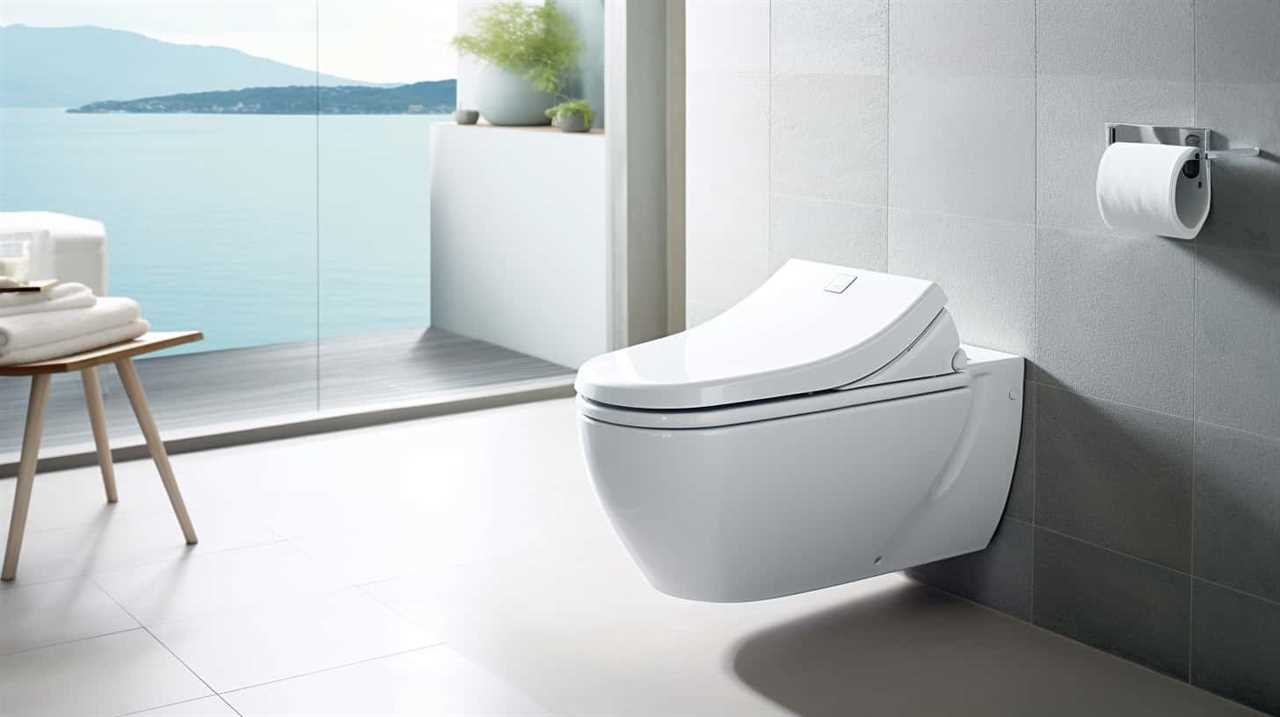
One of the sustainable options is using toilet paper made from recycled materials. This reduces the demand for virgin paper and minimizes deforestation.
Another option is bidets or attachable bidet sprayers. These devices use water to clean instead of wipes, reducing waste and the need for disposable products.
Additionally, there are homemade alternatives such as cloth wipes or reusable toilet wipes. These can be made from soft fabric and washed after each use, reducing the amount of waste generated.
It’s important to note that using eco-friendly alternatives not only benefits the environment by reducing waste and deforestation but also promotes a more sustainable and responsible lifestyle.
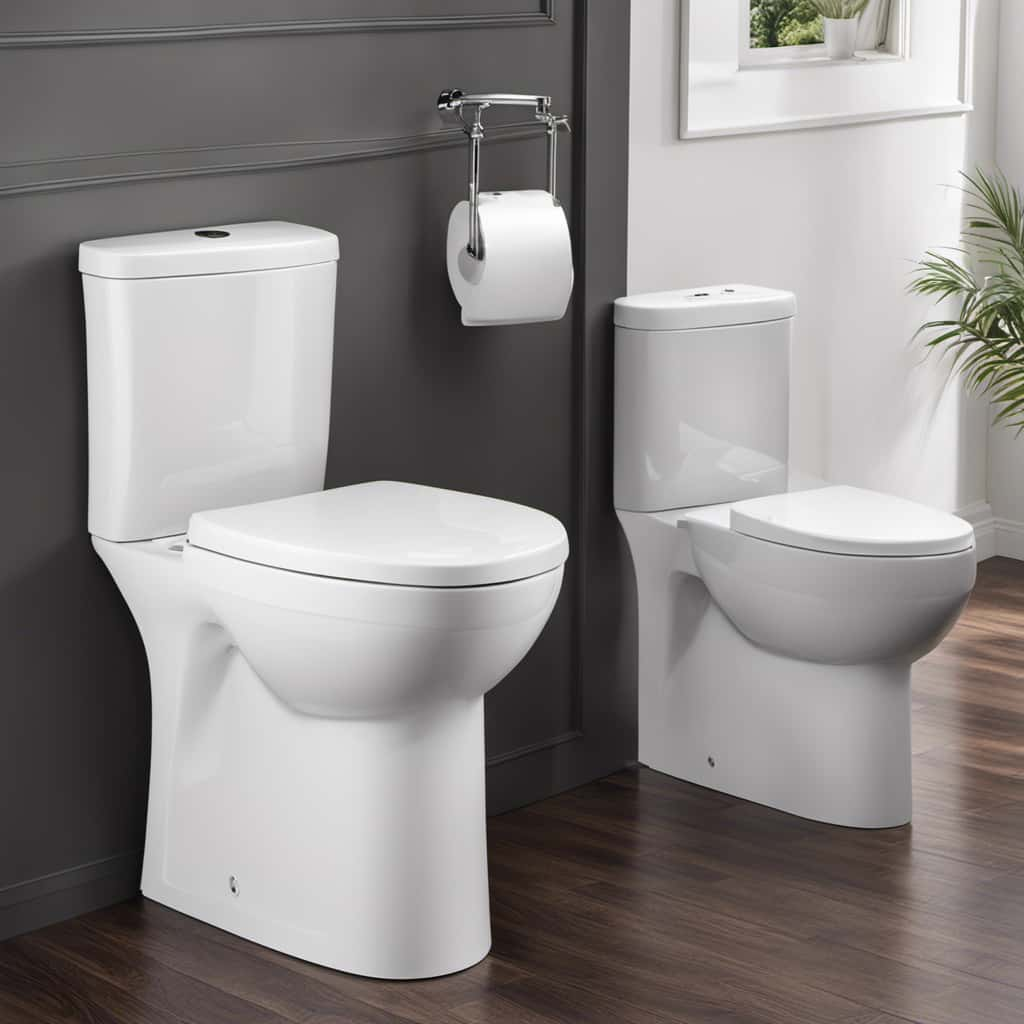
Frequently Asked Questions
Are Toilet Wipes Safe to Flush Down the Toilet?
Toilet wipes are not safe to flush down the toilet. They are made of non-biodegradable materials and can cause blockages in plumbing systems. There are alternative products, such as biodegradable wipes or toilet paper, that can be safely flushed.
Can Toilet Wipes Cause Blockages in the Plumbing System?
Toilet wipes can cause blockages in the plumbing system, leading to costly repairs. It is important to consider toilet wipes alternatives to minimize their impact on sewage systems and ensure the smooth operation of our plumbing.
How Do Toilet Wipes Compare to Regular Toilet Paper in Terms of Breakdown Time?
Toilet wipes and regular toilet paper breakdown time differ significantly. Using non-flushable wipes can have a detrimental impact on the environment. Scientific evidence thoroughly supports the need for mastery in choosing eco-friendly alternatives to protect our ecosystem.
Are There Any Regulations or Standards for Labeling Toilet Wipes as "Flushable"?
There are regulations on ‘flushable’ labeling, but misleading claims can still impact consumers. It’s important to rely on scientific evidence to determine if toilet wipes are truly flushable and won’t cause plumbing issues.
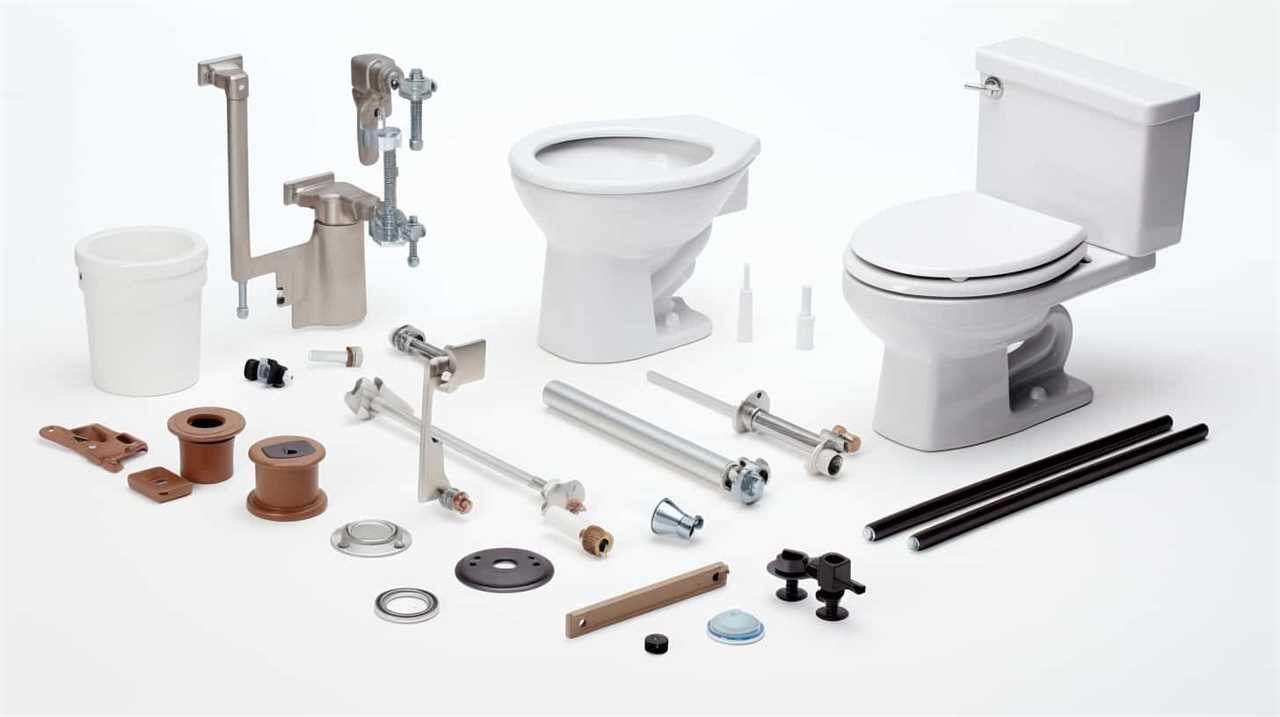
What Are the Environmental Impacts of Using Non-Flushable Toilet Wipes?
Environmental concerns arise from using non-flushable toilet wipes, as they can clog pipes, leading to costly repairs. Moreover, these wipes can overwhelm wastewater treatment systems, impacting their efficiency and potentially causing environmental harm.
Conclusion
In conclusion, toilet wipes can take a significant amount of time to break down, especially non-flushable ones. Factors such as composition, moisture, and disposal method can all affect their breakdown time.
On average, flushable toilet wipes may take a few weeks to decompose, while non-flushable wipes can take months or even years.
It’s important to consider eco-friendly alternatives to toilet wipes, such as bidets or reusable cloth wipes, to minimize environmental impact.
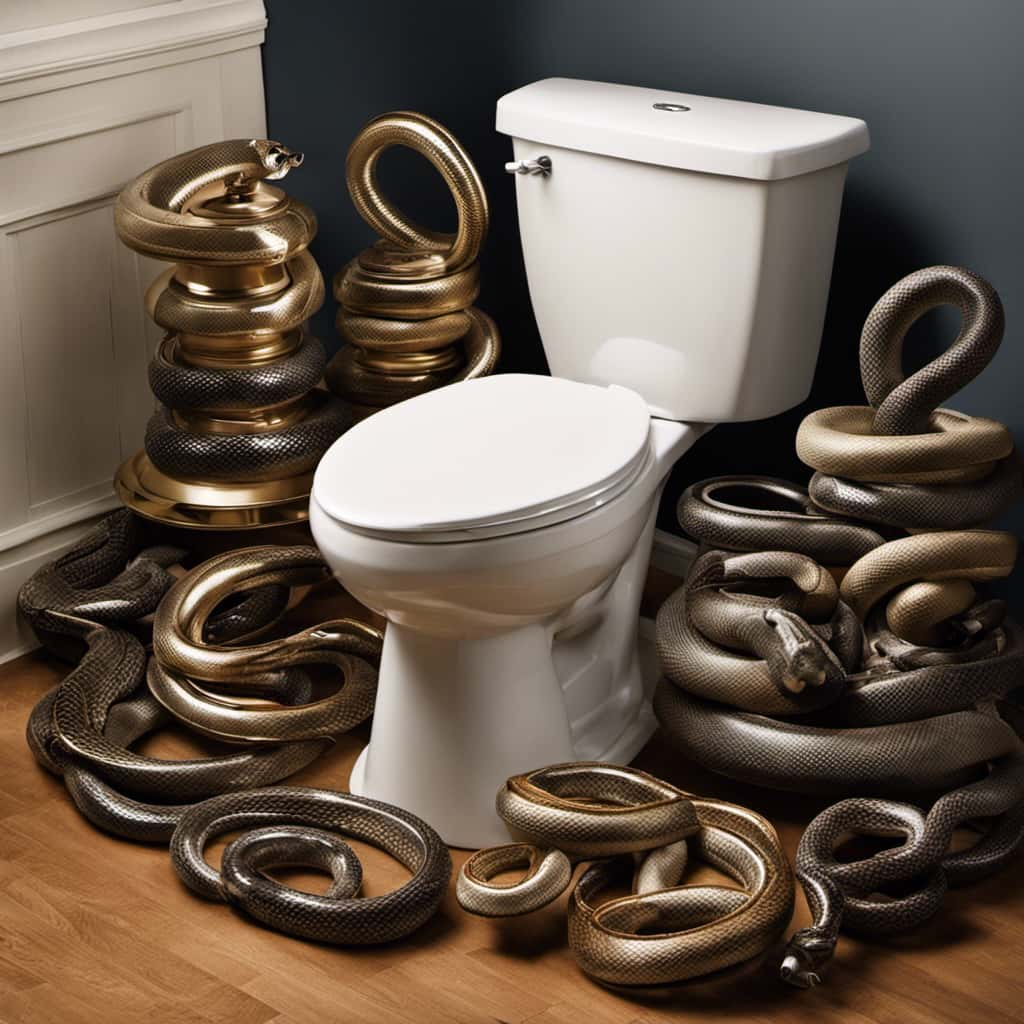
Remember, every wipe we toss away is like a tiny time bomb in our ecosystems.
